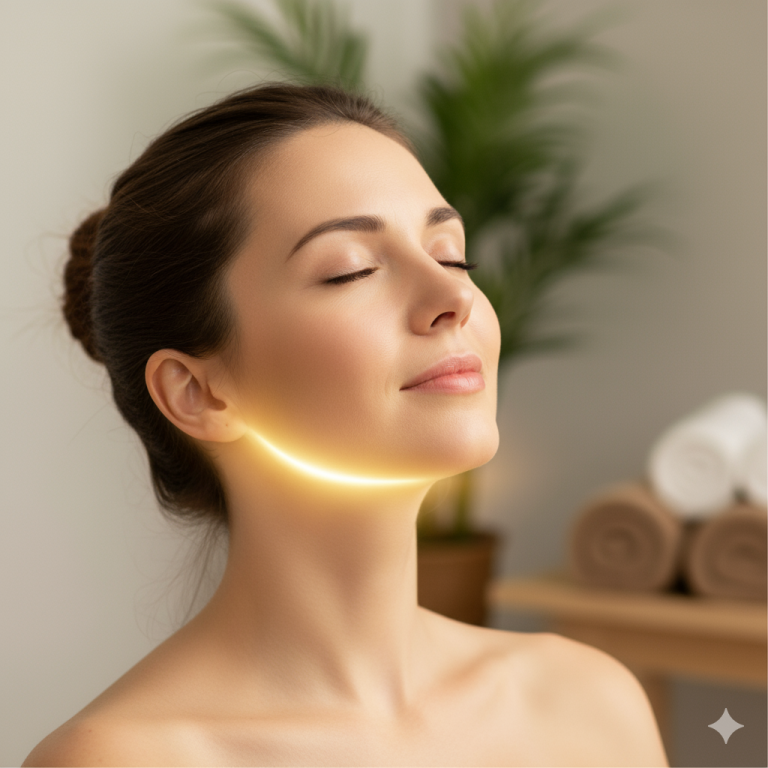“The Act of Pleasant Stress Relief”: How an NYT Crossword Clue Became a Wellness Phenomenon.
It might have started with a simple clue in the world’s most famous crossword puzzle, but the phrase “act of pleasant stress relief” has come to represent a deeply human experience that is both ancient and thoroughly modern. Why do we find ourselves mesmerized by videos of soap being sliced into perfect ribbons? What is the profound satisfaction derived from popping bubble wrap or squishing a brightly colored slime? These seemingly trivial activities have captured the public’s attention, spawning viral social media trends and entire online communities dedicated to their calming power. This article explores the phenomenon behind the act of pleasant stress relief nyt puzzle solvers were searching for. We will delve into its origins, define what constitutes an act of pleasant stress relief, unpack the psychology and neuroscience that make these behaviors so effective, and examine their cultural impact, from simple pastimes to therapeutic tools.
Origins of the Term: From a Crossword Clue to a Cultural Touchstone

The journey of the phrase “act of pleasant stress relief” into the popular lexicon is a fascinating case study of modern language and digital trends. Its most prominent launchpad was the New York Times (NYT), though not in a headline or feature article, but within the black and white squares of its iconic crossword puzzle. When the clue appeared, it sent thousands of solvers to their search engines, typing in the exact phrase to find the answer. This digital breadcrumb trail is what cemented the term’s association with the publication, leading to the high search volume for “act of pleasant stress relief nyt crossword” and related queries. The clue went viral not just because people were looking for an answer, but because the phrase itself resonated. It gave a name to a feeling everyone recognized but had no specific term for.
This phenomenon didn’t occur in a vacuum. It tapped into a broader cultural context already primed for sensory satisfaction. The rise of Autonomous Sensory Meridian Response (ASMR), with its whispering creators and crinkling sounds, had already normalized the idea of finding pleasure and relaxation in specific auditory and visual triggers. Simultaneously, platforms like TikTok and Instagram were exploding with the “oddly satisfying” trend, where millions of users watched short, looping videos of perfect processes—paint mixing, hydraulic presses crushing objects, and intricate domino chains toppling flawlessly. The NYT crossword clue simply provided a more formal, searchable name for this category of experience, connecting a traditional pastime with a burgeoning digital subculture.
What Is an “Act of Pleasant Stress Relief”?
At its core, an act of pleasant stress relief is a simple physical or sensory action that provides an immediate sense of calm, focus, or satisfaction. Unlike long-term stress management strategies like exercise or meditation, these acts are typically short-lived, repetitive, and deliver an instant neurological reward. They engage the senses in a predictable, non-threatening way, allowing the mind to momentarily disengage from sources of anxiety and focus on a single, gratifying input.

The examples are vast and varied, often falling into tactile, visual, or auditory categories:
- Popping bubble wrap: A classic example combining a satisfying tactile press with a crisp, rewarding sound.
- Cutting kinetic sand or soap: This provides a smooth, visual glide accompanied by a soft, pleasing sound, offering a feeling of effortless control and perfection.
- Squishing stress balls or slime: The tactile resistance and malleability of these objects provide a direct outlet for physical tension.
- Watching satisfying loops: Videos of dominoes falling, objects fitting perfectly, or machines operating in flawless rhythm appeal to our brain’s love of order and predictability, providing a sense of completion without any effort on our part.
We enjoy these acts instinctively because they tap into fundamental brain mechanics. Our brains are pattern-detection machines, and in a world filled with chaos and uncertainty, a simple, predictable, and repetitive action offers a micro-dose of order and control. It’s a small, manageable world where the outcome is always known and always satisfying. This predictability is the key ingredient, providing a safe harbor for a mind overloaded with complex problems and unpredictable stressors.
The Psychology Behind Stress Relief Acts: Mindfulness in Miniature
The soothing power of these simple acts is not just a quirky habit; it’s rooted in established psychological principles. The primary reason repetitive, simple tasks calm the brain is that they reduce cognitive load. When you are stressed, your mind is often racing, juggling multiple worries—a state known as hypervigilance. Focusing on a single, low-stakes task like kneading dough or watching sand fall through your fingers effectively declutters your mental workspace. It doesn’t solve your problems, but it provides a momentary respite, allowing your nervous system to downshift.
This experience is deeply connected to the concepts of mindfulness and the “flow state”. Mindfulness is the practice of being present in the moment without judgment. An act of pleasant stress relief is, in essence, an informal mindfulness exercise. It anchors your attention to the present through sensory input—the feeling of the slime, the sound of the popping bubbles, the sight of the paint mixing. This is a form of sensory grounding, a technique therapists use to help people manage anxiety and panic attacks by focusing their attention on the physical world around them.
The connection to ASMR research is also significant. Studies on ASMR suggest that specific auditory and visual triggers can activate brain regions associated with reward and emotional arousal, leading to feelings of comfort and relaxation. While not everyone experiences the “tingling” sensation of ASMR, many of the same triggers—soft sounds, slow movements, and repetitive actions—are at the heart of what makes these stress-relieving acts so compelling. As one psychologist might explain, “These actions provide a predictable sensory input that signals safety to the brain. When the world feels out of control, controlling a small, predictable interaction gives us a temporary illusion of agency, which is profoundly calming”.
The Neuroscience Perspective: How Popping Bubbles Calms Your Brain

When we look at what happens inside the brain during an act of pleasant stress relief, we can see a clear neurological shift away from a state of stress and toward one of calm and reward. Three key areas of the brain are involved: the amygdala, the prefrontal cortex, and the dopamine reward system.
The amygdala is the brain’s alarm system. It detects threats and triggers the fight-or-flight response, flooding the body with stress hormones like cortisol. The prefrontal cortex, on the other hand, is the center for executive function—rational thought, planning, and emotional regulation. When you’re stressed, the amygdala is highly active, and the prefrontal cortex struggles to maintain control. A simple, repetitive, and predictable sensory act can help soothe the amygdala. Because the action is non-threatening and the outcome is known, the amygdala quiets down, which in turn allows the prefrontal cortex to come back online, restoring a sense of control.
This process is reinforced by the brain’s dopamine reward system. Each bubble pop, each perfect slice of soap, acts as a “small win.” Completing this tiny, predictable task triggers a small release of dopamine, the neurotransmitter associated with pleasure and reward. This creates a gentle, positive feedback loop. The act feels good, so you repeat it, and the repetition continues to soothe your overactive stress response. This is why tactile feedback, in particular, is so effective; studies have shown that physical sensations can directly lower the activation of the sympathetic nervous system (responsible for the stress response) and engage the parasympathetic nervous system (responsible for “rest and digest”).
It’s also important to distinguish between this type of relief and stress itself. Not all stress is bad. Eustress, or positive stress, is the kind that motivates you, like the excitement before a competition. The stress we seek to relieve is distress, which is overwhelming and harmful. Acts of pleasant stress relief are a direct antidote to distress, offering a predictable, rewarding experience to counteract feelings of being overwhelmed.
A Catalog of Calm: Popular Acts of Pleasant Stress Relief
While the experience is universal, the specific acts that bring relief are deeply personal. They can be broadly categorized by the primary sense they engage, though many offer a multisensory experience.
Tactile Acts

Tactile relief is perhaps the most primal form of self-soothing. It involves the sense of touch to ground us in our bodies and provide a direct outlet for tension.
Bubble Wrap, Slime, and Kinetic Sand: These are the superstars of tactile relief. The appeal of bubble wrap is the irresistible combination of tension and release in each pop. Slime offers a versatile experience—it can be stretched, squeezed, and folded, providing endless feedback. Kinetic sand, with its unique property of being moldable yet free-flowing, is mesmerizing to touch and watch as it collapses.
Stress Balls and Fidget Toys: These objects are designed for repetitive motion. Squeezing a stress ball channels nervous energy into a physical act, while fidget spinners or cubes provide a simple, repeatable motion that can help focus the mind.
Visual Acts

For many, satisfaction comes from watching order emerge from chaos or witnessing a perfectly executed process.
Soap Cutting and Paint Mixing: These are titans of the “oddly satisfying” video genre. The appeal of soap cutting lies in the smooth, clean slices and the crisp sound. Paint mixing, where colors swirl into a new, uniform hue, provides a visual representation of harmony and integration.
Domino Chains and Rube Goldberg Machines: These acts showcase the beauty of cause and effect. Watching a long, intricate chain of dominoes fall perfectly is a testament to order and predictability. The payoff is a guaranteed, spectacular finish.
“Oddly Satisfying” Videos: This broader category includes everything from high-pressure water jets cleaning a dirty surface to perfect handwriting loops. They deliver a sense of completion and perfection vicariously.
Auditory Acts
Sound can have a powerful effect on our nervous system. Certain sounds can trigger relaxation responses almost instantly.
Crunching, Tapping, and ASMR: The sound of walking on crisp leaves, the tapping of rain on a window, or the gentle crinkle of paper can be incredibly soothing. This category is the domain of ASMR, where creators use high-fidelity microphones to capture soft whispers, gentle tapping, and other subtle sounds that trigger relaxing “tingles” in some listeners.
White Noise and Nature Sounds: Sounds like rainfall, ocean waves, or even the hum of a fan can mask jarring background noises and create a stable, predictable auditory environment that promotes relaxation and focus.
Hybrid Experiences

Some of the most effective stress-relieving acts engage multiple senses at once and often involve a mindful, repetitive process.
Cooking and Baking: The simple, repetitive motions of chopping vegetables, kneading dough, or stirring a pot can be incredibly meditative. It combines tactile feedback with pleasant smells and the visual satisfaction of creating something.
Puzzles and Knitting: Activities like assembling a jigsaw puzzle or knitting involve repetitive motions, focus, and the slow, satisfying emergence of order from chaos. They are a perfect blend of a mental challenge and a soothing, tactile process.
Yoga and Tai Chi: These practices are hybrid experiences in the truest sense, combining physical movement, breath control, and mental focus to calm the nervous system and promote a state of flow.
Cultural Phenomenon: From Crossword Clues to TikTok Trends
The reason so many crossword solvers flocked to search engines for the “act of pleasant stress relief” is that the puzzle gave voice to a shared, unnamed experience. The New York Times, as a cultural institution, has the power to legitimize and popularize language. By including the phrase, it inadvertently launched a keyword that would unlock a universe of content for those seeking this specific form of comfort. The search for the act of pleasant stress relief nyt crossword clue didn’t just end with an answer; it led people to communities and content that resonated deeply with their own sensory preferences.
This journey was amplified exponentially by social media platforms. TikTok, YouTube, and Instagram became the primary arenas where these behaviors were shared and celebrated. The short-form video format is perfectly suited for showcasing a quick, satisfying loop—a knife gliding through kinetic sand or slime being stretched into a perfect swirl. Algorithms quickly identified this content as highly engaging, creating a feedback loop where creators produced more satisfying videos, and viewers consumed them voraciously. This led to the creation of memes, challenges, and tight-knit communities built around a shared love for sensory satisfaction. It also spawned a thriving market for products like artisanal slimes, sensory toys, and kinetic sand kits, turning a simple behavior into a commercial industry.
Therapeutic Applications: From Self-Soothing to Clinical Use
Beyond pop culture, the principles behind these acts have long been used in clinical and therapeutic settings. Psychologists often incorporate sensory-based techniques into stress management plans. The practice of grounding, as mentioned earlier, is a cornerstone of therapies for anxiety, panic disorder, and PTSD. A therapist might instruct a client to focus on the feeling of a smooth stone in their hand or the sound of a ticking clock to pull them out of an anxious thought spiral.
In occupational therapy, sensory integration techniques are used to help both children and adults regulate their sensory systems. For individuals with sensory processing disorders, autism, or ADHD, engaging in specific tactile or visual acts can help them manage sensory overload and improve focus. This is why classrooms and workplaces are increasingly incorporating “stress relief kits” or “calm-down corners” stocked with items like stress balls, putty, and fidget toys. These tools provide a simple, non-disruptive way for individuals to self-regulate. One of the most significant benefits is the potential for self-soothing without relying on digital devices. In an age of screen addiction, turning to a simple, physical act for comfort is a powerful way to disconnect and recharge.
Critiques and Limitations: Not a Cure-All
While these acts are beneficial, it is crucial to recognize their limitations. First and foremost, they are not a replacement for professional therapy or medication for serious mental health conditions. They are tools for in-the-moment regulation, not a cure for underlying issues like chronic anxiety or depression.
Furthermore, for some individuals, these behaviors can become compulsive or a form of avoidance. If someone finds themselves spending hours watching satisfying videos to avoid responsibilities, the behavior has crossed from helpful to harmful. It’s about balance—using these acts as a temporary reset button, not an escape hatch.
Finally, accessibility and individual differences are important considerations. What one person finds intensely satisfying, another might find irritating or even distressing. For example, someone with misophonia (a hatred of specific sounds) might find crunching sounds to be a source of extreme anxiety, not relief. Sensory preferences are highly personal, and there is no one-size-fits-all solution.
Frequently Asked Questions (FAQs)
What does “act of pleasant stress relief” mean in the NYT crossword?
In the context of the crossword, the answer is often a specific example like “POPPINGBUBBLEWRAP” or a more general term related to soothing activities. The clue itself refers to any simple, repetitive action that provides immediate calm or satisfaction.
Why do people enjoy bubble wrap popping or soap cutting?
People enjoy these acts because they provide a predictable, sensory reward. They engage the brain’s reward system with a “small win,” reduce cognitive load by focusing attention on a simple task, and create a sense of order and control, which helps to calm the body’s stress response.
Is this the same as ASMR?
It is related but not exactly the same. ASMR is a specific sensory phenomenon characterized by a static-like or tingling sensation on the skin. Many acts of pleasant stress relief (like listening to soft sounds) can be ASMR triggers, but not all of them are, and not everyone who enjoys these acts experiences ASMR. The term is broader, covering any satisfying sensory act.
Can these acts replace meditation or therapy?
No. While they can be a form of informal mindfulness and are useful for in-the-moment stress reduction, they are not a substitute for the deep, long-term work done in therapy or the structured practice of meditation. They are best viewed as a complementary tool in a larger mental wellness toolkit.
What are some easy acts of stress relief I can try today?
You can try kneading dough, methodically peeling a piece of fruit, doodling simple, repeating patterns on a piece of paper, slowly stirring your tea or coffee, or simply focusing on the sensation of your feet on the ground for 60 seconds.
Conclusion: The Power of Simple Pleasures
From a cryptic crossword clue to a global digital phenomenon, the act of pleasant stress relief highlights a profound truth about human psychology: simple sensory acts are powerful, accessible, and low-cost tools for mental wellness. They serve as a crucial bridge between mindless entertainment and genuine stress relief, offering a moment of predictable calm in an unpredictable world. While they won’t solve life’s biggest problems, their ability to momentarily quiet the noise, ground us in the present, and offer a small, perfect moment of satisfaction should not be underestimated. The ultimate lesson is an invitation to explore and honor our own personal rituals of relief—to find the small, simple acts that bring us back to a state of balance, one bubble pop, one smooth slice, one satisfying click at a time.






